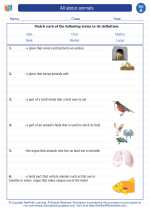Vertebrates
Vertebrates are animals that have a backbone or spinal column. They belong to the subphylum Vertebrata within the phylum Chordata. Vertebrates are classified into five main groups: fish, amphibians, reptiles, birds, and mammals.
Fish
Fish are aquatic vertebrates with gills for breathing and fins for swimming. They can be found in both saltwater and freshwater environments. Examples of fish include salmon, tuna, and goldfish.
Amphibians
Amphibians are vertebrates that live both in water and on land. They typically go through a metamorphosis from aquatic larvae to terrestrial adults. Examples of amphibians include frogs, toads, and salamanders.
Reptiles
Reptiles are vertebrates that are characterized by their scaly skin and laying shelled eggs. They are cold-blooded and often have a three-chambered heart. Examples of reptiles include snakes, lizards, turtles, and crocodiles.
Birds
Birds are vertebrates with feathers, beaks, and wings. They are warm-blooded and lay hard-shelled eggs. Birds are well-adapted for flight and are found in a wide range of habitats. Examples of birds include eagles, sparrows, and penguins.
Mammals
Mammals are vertebrates that have hair or fur, mammary glands, and a four-chambered heart. They give birth to live young and nurse them with milk. Mammals can be found in diverse habitats and include animals such as humans, dogs, cats, and elephants.
Study Guide
- What are vertebrates?
- Name the five main groups of vertebrates and provide an example of each.
- What are the key characteristics of fish?
- Describe the life cycle of amphibians.
- What are the distinguishing features of reptiles?
- How are birds adapted for flight?
- What are the defining traits of mammals?
[Vertebrates] Related Worksheets and Study Guides:
.◂Science Worksheets and Study Guides First Grade. All about animals

 Worksheet/Answer key
Worksheet/Answer key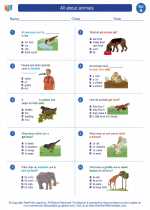
 Worksheet/Answer key
Worksheet/Answer key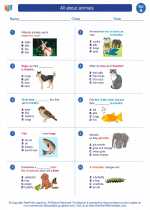
 Worksheet/Answer key
Worksheet/Answer key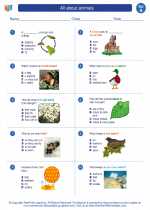
 Worksheet/Answer key
Worksheet/Answer key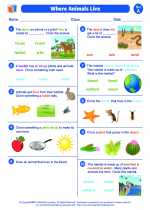
 Vocabulary/Answer key
Vocabulary/Answer key